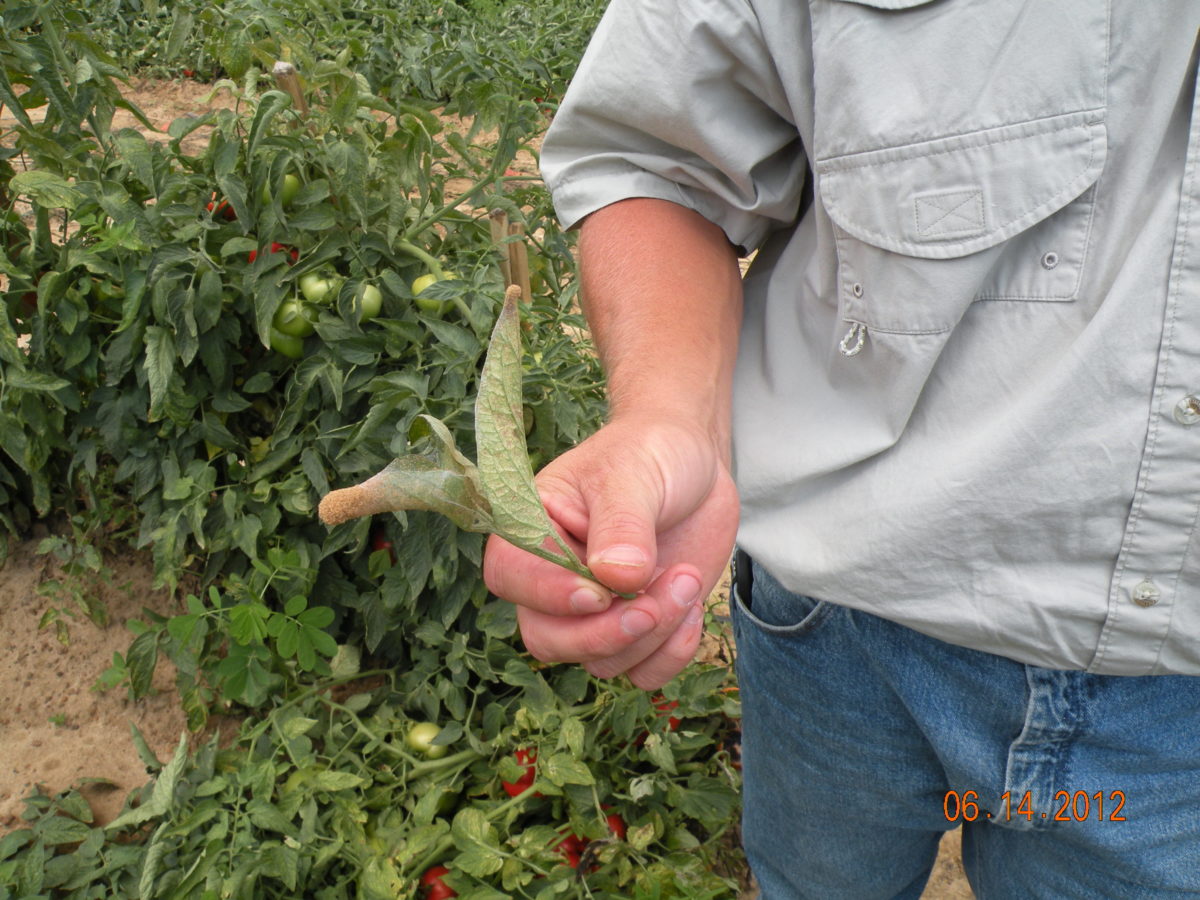If the weather is hot and dry, growers will want to keep an eye out for spider mites. According to Ayanava Majumdar, an Extension entomologist for the Alabama Cooperative Extension System, high populations of spider mites can devastate vegetable crops.
There are several different types of spider mites, including twospotted mites, russet mites, rust mites and broad mites. All of these are common in vegetable crops, but broad mites are also common in fruit and berries.
Twospotted spider mites are the most commonly found. These mites come in different colors. Most of the time, you’ll see them in yellows and greens with two spots on the top of their back. Twospotted spider mites are well known for their rapid life cycle. “So, after you detect them, as soon as seven to 10 days later, you can have a good outbreak,” Majumdar says.
Spider mites enjoy hot and dry weather and can be a big problem in high tunnels and greenhouses. “We see a lot of spider mites (in greenhouses and high tunnels) because of the heat pockets. Also, when you’re excluding natural enemies, spider mites can get really bad,” Majumdar says.
Spider mites are great travelers. They can travel on equipment and humans walking around the production system. They can also travel in gusts of dust. Majumdar warns that if there is mowing going on around a greenhouse or high tunnel, the dust that follows the equipment can cause a spider mite infestation if it settles on the plants.
Scouting is essential for spider mite management. Majumdar recommends using a magnifying lens to look at the bottom side of the leaves. Twospotted spider mites will be the easiest to see, as they are the biggest. Majumdar also says that the grower can hold a white piece of paper under the leaf and tap it. “You’ll see these dust particles fall off. If they move, they’re mites,” he explains.
Aside from scouting, Majumdar gives some recommendations for managing spider mites. He says the most effective way is simply to take care of the plants and do not let them become stressed. “Any time you have stressed plants, especially in drought-like conditions, that’s a calling card for mites,” Majumdar says.
Reducing mowing and other mechanical operations when weather conditions are dry is also a good management method. Regarding high tunnels, Majumdar says growers sequentially shutting down production and harvesting the produce in a timely manner works better than trying to control spider mites with organic treatment. “Organic treatments are slow,” he says.
Majumdar says growers should look for beneficial insects, which are great tools to control spider mites. Moreover, natural rainfall takes care of spider mites. “Usually in a wet year, we don’t see spider mites,” he says.
Majumdar reminds growers to reach out to their region Extension agents for a definitive diagnosis. Or, if the grower is interested in control methods using miticides or insecticides, he says it is a good idea to refer to the 2018 Southeastern U.S. Vegetable Crop Handbook.
Hear Majumdar’s comments:
Share this Post











